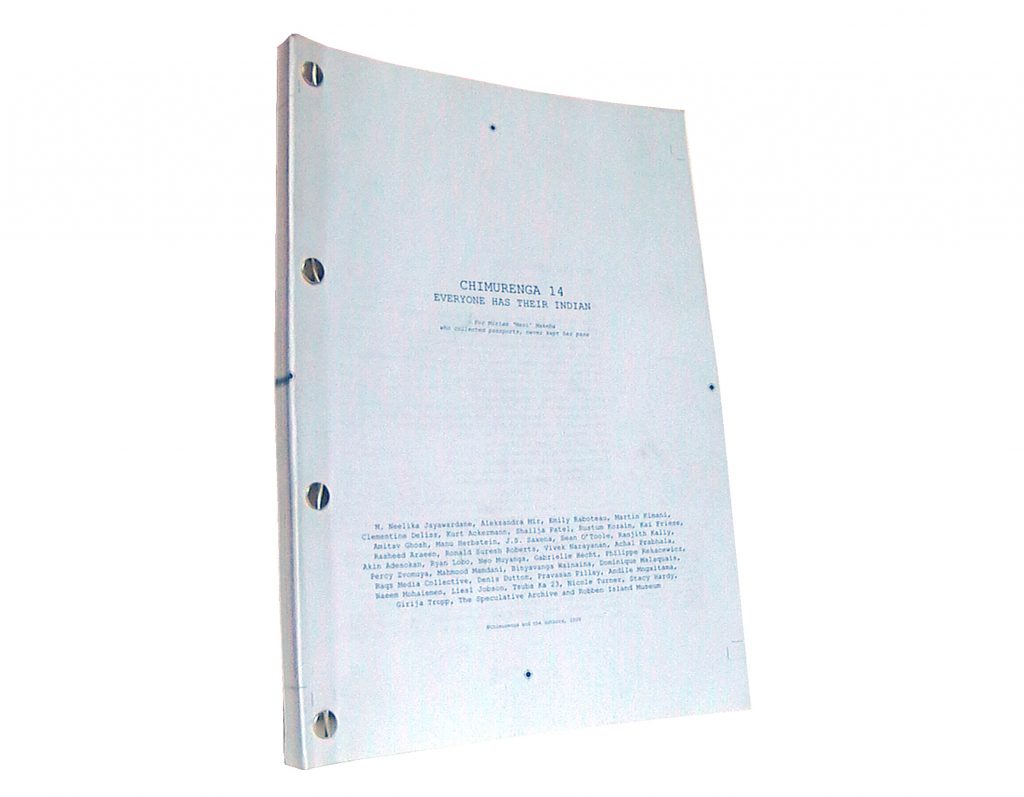
This issue features words and images on the Third World project and links, real and imagined, between Africa and South Asia.

Chimurenga 14, “Everyone Has Their Indian”, seeks to unpack the relation between Africa and South Asia. Born out of the ongoing conversation between divergent temporal registers, between different territories and bodies of thought, it can be seen both as a map of the actual lines that criss-cross the Mediterranean and Indian oceans and a log of possible journeys into a real and imagined territory called the “Third World”. Theory runs adjacent to fiction, and photo essays share the space as hand-drawn maps, post cards and fragments of itineraries. The contributions cover a wide variety of themes, ranging from security, sovereignty and sex, to mobility and music, issues of access, control and censorship, power and identity.
For example, Vivek Narayanan offers a poetic ode to Historical Anthropology, while Manu Herbstein and Achal Prabhala use a free flow of images, memories and realities to map hidden connections. Amitav Ghosh confesses of “xenophilia” and J.S. Saxena’s “Coffee-Brown Boy” asks “If that black cat can be White, why can’t I?” Artworks by Rigo 23, Kakudji, Rasheed Aareen and Ernest Mancoba redraw the boundaries and limits of identity and Philippe Rekacewicz’s itineraries retraces the African connection as a question and not a destination.
Other contributors include Mahmood Mamdani, M. Neelika Jayawardane, Martin Kimani, Shailja Patel, Rustum Kozain, Akin Adesokan , Girija Tropp, Neo Muyanga, Binyavanga Wainaina, Pravasan Pillay , Andile Mngxitama , Naeem Mohaiemen , Tsuba Ka 23, Aleksandra Mir, The Speculative Archive and many more.

To purchase Chimurenga 14 – Everyone Has Their Indian (April 2009), head to our online shop or visit Chimurenga Factory at 157 Victoria Road, Woodstock.
This article and other work by Chimurenga are produced through the kind support of our readers. Please visit our donation page to support our work.
